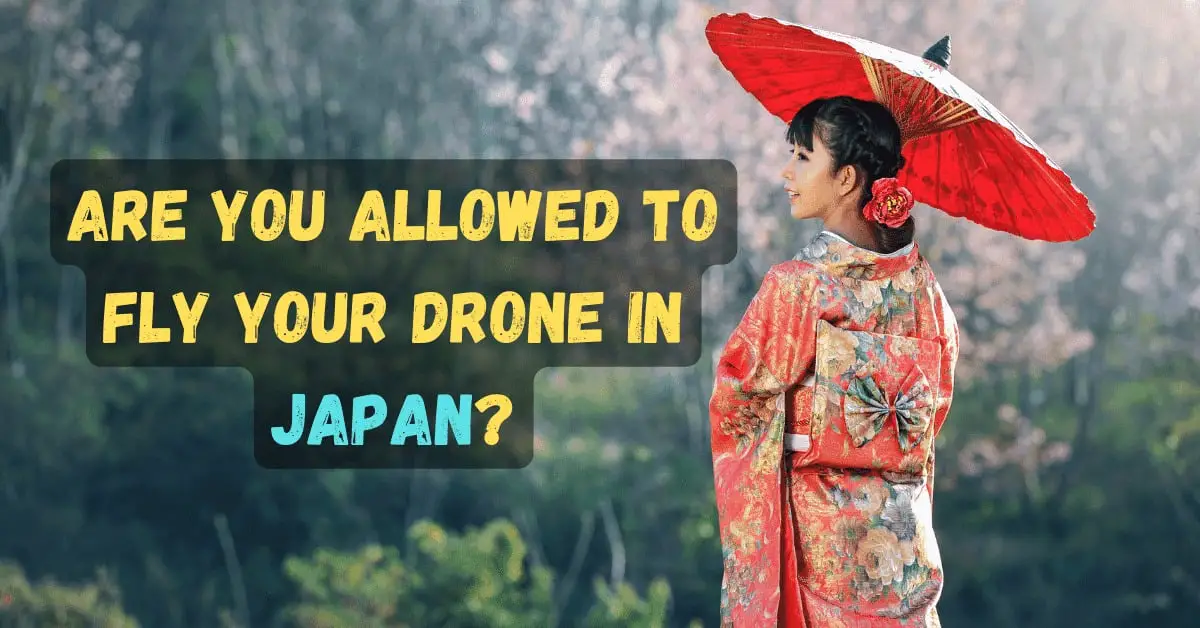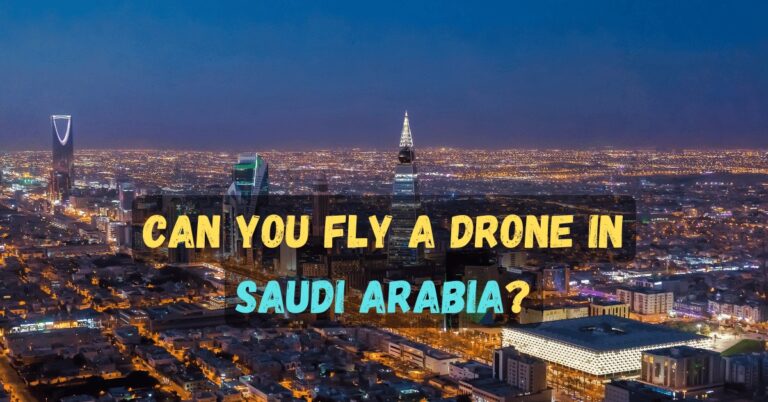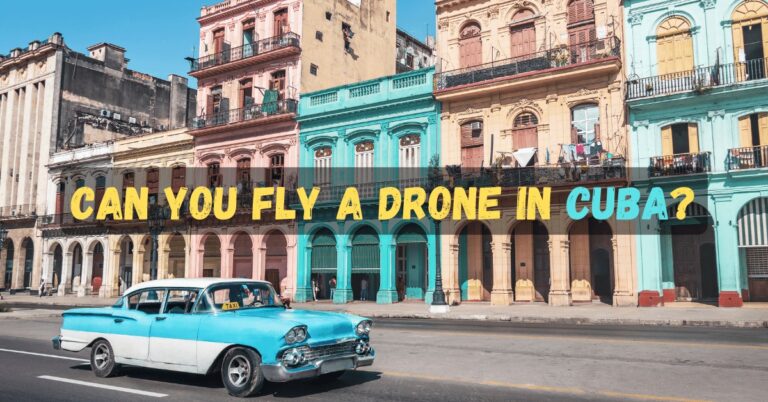Can You Bring a Drone to Japan? (Drone Laws in Japan 2024)

Experience incredible places, cities, homes, jungles, and people – Japan offers it all. But the question arises can you capture the experiences with your drone camera?
Or, Can you bring a drone to Japan?
Yes, you are allowed to bring and fly your drone in Japan. Japan has made some rules for drones that you must follow not to get penalized. The first rule is that you should not fly your drone in Japan that is heavier than 100g.
So, in today’s article, we will unpack the bundle of drone rules in Japan. These rules are essential for recreational or commercial drone pilots. Please keep reading this article because I will reveal some of the best places to fly your drone in Japan.
How to fly your drone in Japan?
Only one thing that can stop you from flying a drone in Japan: violating drone laws. If you are a commercial or recreational drone pilot, there is only one thing you must keep following: drone laws.
There is a specific law for you that you must follow, and that is having a drone certificate. That certificate can be obtained from the Ministry of internal affairs and Communication.
Are you planning to fly your drone in Japan? That sounds like a fun and exciting adventure! But before you launch your drone into the skies, there are some things you need to know. Let me walk you through the requirements to fly a drone in Japan.

Register your drone with the Ministry of Land, Infrastructure, Transport, and Tourism (MLIT). Registration is required for all drones that weigh over 100 grams. Don’t worry; the process is simple and can be done online.
Ensure you have all the necessary documents, including your drone’s specifications and personal information, ready before starting the registration process.
Once your drone is registered, you will receive a registration number that you will need to display on your drone.
Secondly, you need to follow Japan’s drone regulations. These regulations include flying your drone only during daylight hours, within visual line of sight, and below 150 meters.
Avoid flying your drone over crowds, airports, helipads, or within 30 meters of people or buildings. Check local drone regulations before flying, as some cities may have additional rules.
Who controls the rules of flying drones in Japan?
Do you want to know more about the agencies that control drone laws in Japan? Let me tell you all about it!
As I mentioned, the Ministry of Land, Infrastructure, Transport, and Tourism (MLIT) is Japan’s primary agency responsible for drone regulations.
However, they work closely with other government agencies to ensure the safety and security of drone operations.
The Japan Civil Aviation Bureau (JCAB) issues permits for drone operations near airports and controlled airspaces.
READ MORE: Can you fly a drone in the Wilderness area?
Meanwhile, the National Police Agency (NPA) enforces drone regulations and investigates violations.

Planning to fly your drone in Japan? Knowing the key agencies regulating drone operations is essential. Let me clarify that the JCAB is also a branch of MLIT.
Each agency is crucial for ensuring drone safety. Follow their rules and regulations.
What are the rules and regulations for flying a drone in Japan?
This section is crucial. Pay attention to drone rules. Below are all of them, and you can copy them.
The first drone rule is that you don’t need to register if your drone weighs less than 100g. On the other hand, if it is heavier than 100g, you should first register it with JCAB.
The following rule is to have a remote ID for your drone. This ID provides all the information about your drone to the other parties.
Register your drone in Japan at least ten days beforehand and practice patience.

Here more drone laws in Japan
Avoid flying your drone if you’ve been drinking to prevent potential collisions.
Pre-check your drone to ensure it’s updated and ready for a safe flight.
If you are flying your drone in Japan, then please keep your drone away from other airplanes and aircraft.
Avoid carrying items that can damage property and refrain from flying your drone in the dark. Please fly your drone only in the daytime in Japan.
Your drone should remain 30 meters away from the people when you are flying it in Japan. In Japan, many events and functions are held, and I recommend you refrain from flying your drone there.
Another important rule is to not fly a drone in a way that looks reckless. According to the JCAB and MLIT, you will pay at least a 5000 dollars fine if you do not follow the rules.
You can also get yourself in Jail for more than one year.

What kind of Drones can you fly in Japan?
If you plan on flying a drone in Japan, knowing the regulations and restrictions is essential to stay calm. Japan is a beautiful country with stunning landscapes perfect for capturing aerial footage, but it’s also important to be mindful of safety and privacy concerns.
In Japan, you can fly a drone as long as it weighs less than 100 grams and is flown below 150 meters in altitude. If your drone weighs more than 100 grams, you must register it with the Ministry of Land, Infrastructure, Transport, and Tourism (MLIT) and obtain a license to fly it.
You’ll also need to follow specific rules, such as not flying your drone near airports, train stations, or crowded areas.
And remember to respect people’s privacy by not flying your drone near private residences or over public roads. It’s always better to be safe than sorry, so research before taking off!

If you need clarification on the rules and regulations, don’t worry! Plenty of resources are available online to help you navigate the drone-flying landscape in Japan.
And who knows, you’ll even get to capture some fantastic footage of Mount Fuji or the bustling streets of Tokyo.
What are the places where flying drones is prohibited in Japan?
Flying a drone in Japan can be fun, but knowing where it’s prohibited is essential. Japan has strict regulations regarding drone flying, so it’s best to research before taking off.
Some places where flying a drone is prohibited in Japan include airports, train stations, and other transportation hubs. Flying drones in crowded areas such as parks, beaches, and shopping districts is also banned.
Additionally, drones can only be flown within a 30-meter radius of people, buildings, or vehicles with prior permission from the authorities. There are different airports in Japan where you cannot fly your drone.
The buildings and the areas where the government is involved, like the houses of the ministers, are very prohibited for a drone pilot. If you want to know more about the banned places, you can visit the official National Police Agency website.

If your home is near the official government buildings or areas at least 300 meters, you are not even allowed to fly your drone.
How to register a drone in Japan?
If you’re planning to fly a drone in Japan, it’s essential to register it with the Ministry of Land, Infrastructure, Transport, and Tourism. Don’t worry, the process is pretty simple!
To register your drone in Japan, you’ll need to provide some basic information such as your name, address, and contact information. You’ll also need to provide the make and model of your drone and its weight and flight capabilities.
READ MORE: Dominican Republic drone laws
Once you’ve gathered all the necessary information, you can submit your registration application online or by mail. Remember that there is a registration fee, so be sure to have that ready as well.
The official website of MLIT can also do this process, and this website provides both English and Japanese languages.
With a little hack, if you are still looking for the English language, you can install a simple plugin on your PC: Google Translate.

After you’ve submitted your registration application, you should receive a registration number within a few days. Be sure to keep this number with you whenever you fly your drone in Japan, as you may be asked to provide it if you’re approached by law enforcement or other officials.
Can you bring a drone on a plane to Japan?
Sure, you can bring your drone on a plane to Japan, but there are some essential things you need to keep in mind. First, you should check the airline’s regulations before you travel, as each airline may have its own rules and restrictions for traveling with drones.
Generally, you’ll need to pack your drone in your carry-on luggage and ensure it’s powered off and the batteries are separated and stored correctly.
You should also bring any necessary documents, such as your drone registration or proof of ownership, just in case you need to provide them to airport security.
When you arrive in Japan, you must go through customs and declare any items you bring, including your drone.
Japanese traditions may ask to see your drone and any related documents, so it’s essential to have everything organized and easily accessible.

It’s also good to familiarize yourself with Japan’s drone regulations and follow them carefully while in the country.
By being well-prepared and following the rules, you can safely and legally bring your drone with you on your trip to Japan.
What are the rules for flying a drone near an airport in Japan?
Flying a drone near an airport in Japan can be a serious offense, so following the rules to ensure safety and avoid legal trouble is essential.
First and foremost, flying a drone within a 4 km radius of any airport or airfield is prohibited without prior permission from the air traffic control tower.
Additionally, it would help if you did not fly a drone over 150 meters in altitude or in areas where it could obstruct the flight paths of aircraft.
It’s important to note that even if you receive permission to fly your drone near an airport, you may still be subject to restrictions based on the airport’s operational status.
For example, even with consent, drone flights may be prohibited during takeoff and landing periods.

Always check the airport’s operational status and regulations before flying your drone in the vicinity.
By following these rules, you can ensure safety and avoid any potential legal issues when flying your drone near an airport in Japan.
How to get approval to fly a drone in a prohibited area in Japan?
If you want to fly your drone in prohibited areas in Japan, such as around airports or certain public places, you must obtain special permission from the relevant authorities. Getting approval can be lengthy, so planning and patience are essential.
To start, you’ll need to identify the specific area you want to fly in and determine which authorities you must contact for permission.
This could include the Ministry of Land, Infrastructure, Transport and Tourism (MLIT), the local government, or the police.
Once you’ve identified the relevant authorities, you’ll need to submit an application outlining the details of your flight plan, including the date, time, and location of your flight, as well as your contact information and the type of drone you’ll be using.
Be sure to provide as much detail as possible and include any relevant documentation, such as a map or aerial photograph of the area.
After submitting your application, you may need to wait several weeks for a response, so plan accordingly.

How to know where inhabited areas are and not fly drones there in Japan?
Knowing where inhabited areas are in Japan is crucial when flying a drone to ensure the safety and privacy of the residents. Fortunately, several resources can help you identify these areas.
One of the most reliable sources is the Japanese government’s website, which provides maps that show areas where drone flight is restricted, including populated areas.
You can also check Google Maps or other online mapping services to understand where urban and residential areas are located.
Additionally, using common sense and respecting people’s privacy when flying a drone in Japan is essential. Avoid flying near houses or other buildings where people might be inside or outside, and always keep a safe distance from any pedestrians or vehicles.
If you need clarification on whether an area is populated, it’s better to err on caution and avoid flying your drone there.

Remember, being a responsible drone pilot not only ensures the safety and privacy of others but also helps maintain the positive reputation of the drone community as a whole.
Important FAQs
Japan has strict drone laws prohibiting flying in specific areas such as airports, crowded places, and residential areas.
The maximum altitude limit for drones is 150 meters, and they must be flown during daylight hours and within the pilot’s visual line of sight. It is also required to have a registered license to fly drones in Japan.
Japan’s remote ID drone requirement mandates that all drones weighing more than 250 grams must have a remote identification system that broadcasts the drone’s location and other important information to authorities.
A drone in Tokyo is allowed in certain areas, such as parks and designated flying locations. However, it is strictly prohibited in many areas due to safety and privacy concerns, such as near government buildings, hospitals, and schools.
Drone insurance is not required by law in Japan, but it is highly recommended to protect yourself in case of accidents or damages caused by your drone.
Japan’s drone laws are expected to be updated in 2023, with new regulations on drone operations in urban areas and changes to the registration process. Details of these new laws are not yet known.
Yes, drone registration is required in Okinawa, just as it is in the rest of Japan. It is essential to check the specific rules and regulations for the area where you plan to fly your drone to ensure compliance with local laws.
Final Thoughts
No matter how beautiful the rest of the world is, Japan has its respect. Flying drones is allowed in Japan, and you can do it by registering your drone and following the drone rules settled by the governmental authorities.
If you have any other queries like this, Can you bring a drone to Japan? Then you can ask in the comment box.
What did you learn from the article: Can you bring a drone to Japan?
Can You Fly DJI Mini 2 Indoors?
“Indoor drone fun? 🏠✈️ Discover how to safely pilot your DJI Mini 2 indoors, from prep to cool tricks. Start the flight indoors now!”







